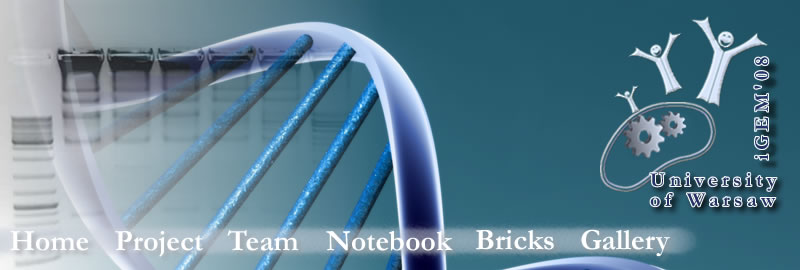Team:Warsaw/Calendar-Main/16 May 2008
From 2008.igem.org
 |
|||||||||
PCRs for fusionsMichał K.
 Fig. 1. PCR products - optimization of annealing temperature: 1-DNA ladder;
Fig. 1. PCR products - optimization of annealing temperature: 1-DNA ladder; 2-annealing temperature 60°C, 8-annealing temperature 80°C  Fig. 2. PCR products - optimization of MgCl2 concentration and number of cycles:
Fig. 2. PCR products - optimization of MgCl2 concentration and number of cycles:
|
 "
"





